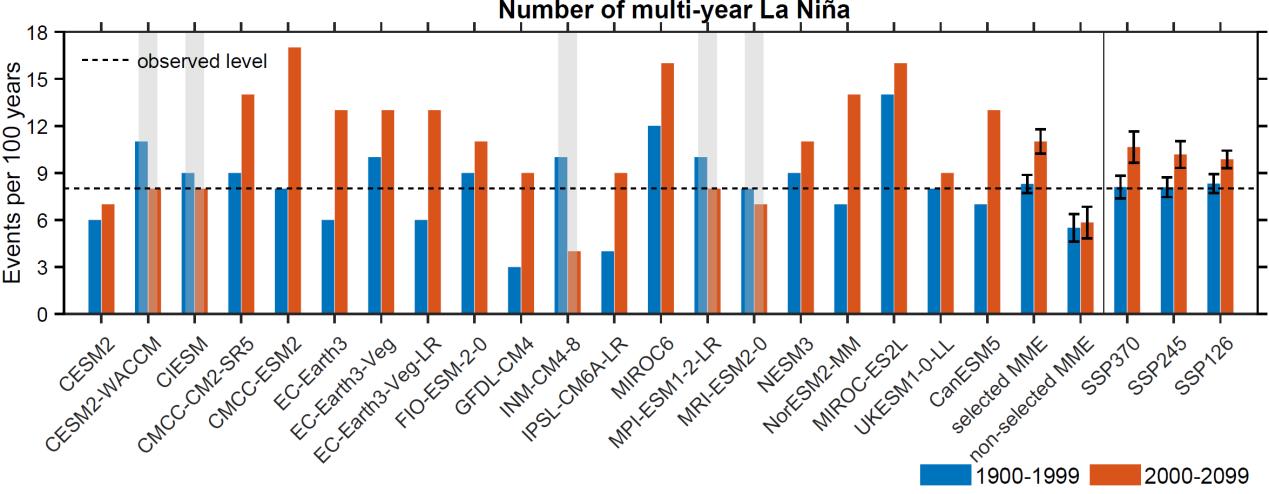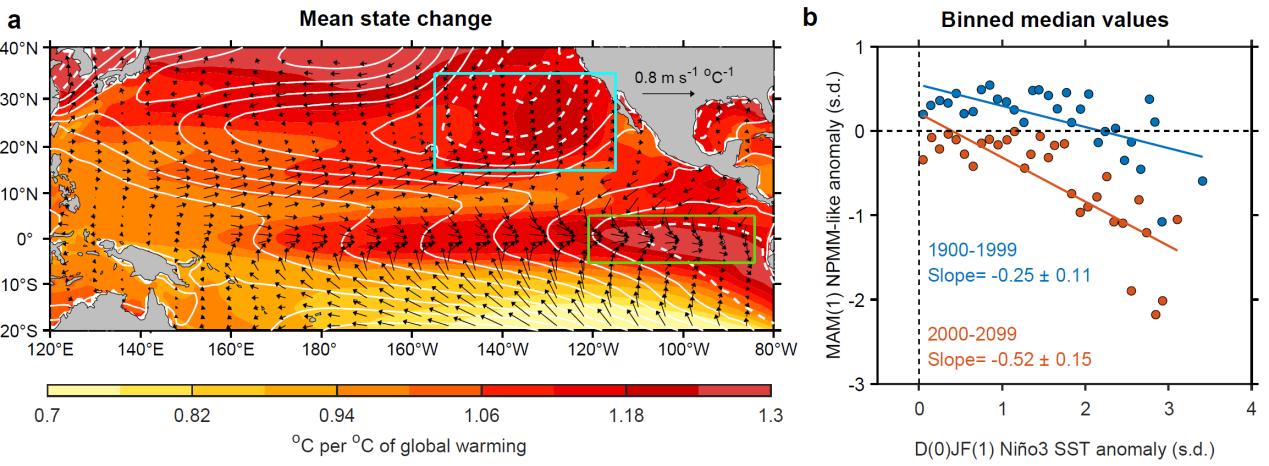Also published on EurekAlert!
The El Niño–Southern Oscillation (ENSO) is the Earth's most consequential interannual climate fluctuation. Alternating irregularly between warm El Niño and cold La Niña phases, it brings shifts in ocean surface temperature and disrupts wind and rainfall patterns across the tropics.
Unlike El Niño, which usually lasts one year, La Niña tends to develop after an El Niño and lasts for two consecutive years or more. This is known as a multiyear La Niña event and exerts prolonged and aggregated impacts, such as increased wildfires, flooding, and altered patterns of hurricanes, cyclones, and monsoons.
Recently, researchers from China, Australia and the U.S. have revealed that multiyear La Niña events are expected to increase under global warming.
The study was published in Nature on July 26.
Based on multiple climate models collected by the Coupled Model Intercomparison Project Phase 6 (CMIP6), the researchers reported a significant increase in the projected frequency of multiyear La Niña events over a 100-year period, from 19 ± 11% in a low greenhouse gas emission scenario to 33 ± 13% in a high emission scenario.
They then revealed the mechanisms underlying this projected increase. "Under present-day climate conditions, a strong El Niño in the boreal winter induces a negative North Pacific Meridional Mode (NPMM)-like response in the subtropical North Pacific, producing a La Niña in the ensuing winter with meridionally extensive sea surface temperature (SST) and easterly wind anomalies," said Dr. JIA Fan from the Institute of Oceanology of the Chinese Academy of Sciences (IOCAS), co-corresponding author of the study.
These meridional patterns correspond to a weak negative wind stress curl in the off-tropics, resulting in a slow recharge of the upper ocean, which is conducive to persistence of the first year La Niña condition into the second year.
Under global warming, El Niño is generally more efficient at triggering a multiyear La Niña due to more efficient tropical-subtropical interaction, which essentially results from a Pacific mean-state warming pattern. Compared with the twentieth century, a faster warming in the subtropical northeastern Pacific induces an NPMM-like response to El Niño's convective anomalies that is both more sensitive and extends farther north.
Furthermore, the anomalies themselves are intensified by faster warming in the equatorial eastern Pacific. The easterlies, which now extend farther north, cause an even slower heat recharge of the equatorial Pacific, thus leaving a colder upper-ocean condition that makes it much easier for the cold SST anomalies to persist through the decay of the first-year La Niña. For these reasons, more multiyear La Niña events are expected to occur.
"These findings suggest that weather extremes as seen during the 2020–2022 La Niña will probably occur more frequently in the near future," said Dr. GENG Tao from Ocean University of China, first author of the study.
Dr. JIA said the results of this study strengthen calls "to reduce greenhouse-gas emissions to alleviate the adverse impacts of increased multiyear La Niña."

Fig. 1 Projected increase in frequency of multiyear La Niña events under future greenhouse-gas forcing.

Fig. 2 The joint impact from the two mean-state warming maxima under greenhouse warming (a) is an NPMM-like pattern that is more sensitive to El Niño's warming anomalies and extends farther north (b) in the 21st century.
Tao Geng, Fan Jia*, Wenju Cai*, Lixin Wu, Bolan Gan, Zhao Jing, Shujun Li and Michael J. McPhaden. (2023). Increased occurrences of consecutive La Niña events under global warming. Nature.
(Text by JIA Fan)
Media Contact:
ZHANG Yiyi
Institute of Oceanology
E-mail: zhangyiyi@qdio.ac.cn
(Editor: ZHANG Yiyi)

